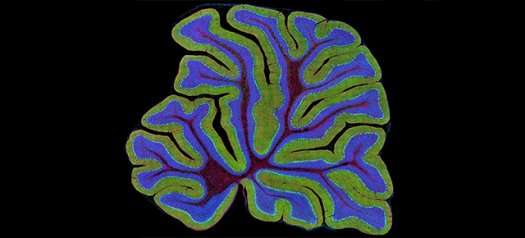Atoh1, a potential Achilles' heel of Sonic Hedgehog medulloblastoma

Medulloblastoma is the most common type of solid brain tumor in children. Current treatments offer limited success and may leave patients with severe neurological side effects, including psychiatric disorders, growth retardation and cognitive impairment.
Sonic Hedgehog, one of the four biologically distinct subtypes of medulloblastoma, is named after the cellular pathway that is impaired in this cancer. The Sonic Hedgehog pathway is important for normal development of the brain, the central nervous system, eyes, limbs and other parts of the body; however, when the pathway goes awry in granule neurons in the cerebellum, cell proliferation spins out of control and cancer can develop. There are drugs directed at correcting the malfunctioning Sonic Hedgehog pathway that currently are in clinical trials, but sometimes, the tumor responds by presenting other mutations that allow it to continue growing. Additional treatments are much needed.
Dr. Tiemo Klisch, an assistant professor of molecular and human genetics and member of the Dan L Duncan Comprehensive Cancer Center at Baylor College of Medicine, has been studying Sonic Hedgehog medulloblastoma for several years. His and other researchers' studies have increased our understanding of the regulation of the Sonic Hedgehog pathway and pointed at potential new strategies to treat this type of medulloblastoma.
How Sonic Hedgehog medulloblastoma can happen
"It is currently thought that when medulloblastoma develops, it recapitulates the embryonic developmental stages and pathways of the cerebellum," said Klisch, who is the corresponding author of this work. "I had been studying the role of transcription factor Atoh1 in normal cerebellar development for some time when I made the transition to studying its role in Sonic Hedgehog medulloblastoma."
Atoh1 is present in the cerebellum during normal embryonic development and up to three weeks after birth in mice, when the cerebellum has concluded its development. At this point, Atoh1 is no longer expressed in the cerebellum. In medulloblastoma, Atoh1 is re-expressed, and in concert with the activated sonic hedgehog pathway, leads to the development of this subtype of medulloblastoma.
"We also found that tyrosine 78 in Atoh1 is phosphorylated exclusively in 'tumor-initiating cells' in mice and in human samples of the Sonic Hedgehog subtype of medulloblastoma," Klisch said.
"Having tyrosine 78 in Atoh1 phosphorylated gives the tumor an advantage," said co-author Dr. Huda Zoghbi, professor of molecular and human genetics and of pediatrics and neuroscience at Baylor and director of the Jan and Dan Duncan Neurological Research Institute. "Phosphorylation increases Atoh1's activity, which enhances tumor growth in mice."
The researchers found that reducing the levels of Atoh1 promotes tumor regression in mice and provides a potential future strategy for treating this type of tumor.
"Because normal cerebellar cells around the tumor lack Atoh1, a potential treatment for Sonic Hedgehog medulloblastoma that is directed against Atoh1 would be expected to spare normal cells," Klisch said.
Furthermore, the researchers identified Jak2 as the enzyme that carries out most of the phosphorylation on tyrosine 78 on Atoh1, and determined that inhibiting Jak2 reduces Atoh1 phosphorylation and tumor growth in mice.
"Jak2 had not been implicated in medulloblastoma before," said Zoghbi, who also is an investigator at the Howard Hughes Medical Institute.
This study has provided new insights into the development of Sonic Hedgehog medulloblastoma and opens the possibility of new potential strategies to treat the disease in the future.
More information: Tiemo J Klisch et al, Jak2-mediated phosphorylation of Atoh1 is critical for medulloblastoma growth, eLife (2017). DOI: 10.7554/eLife.31181

















